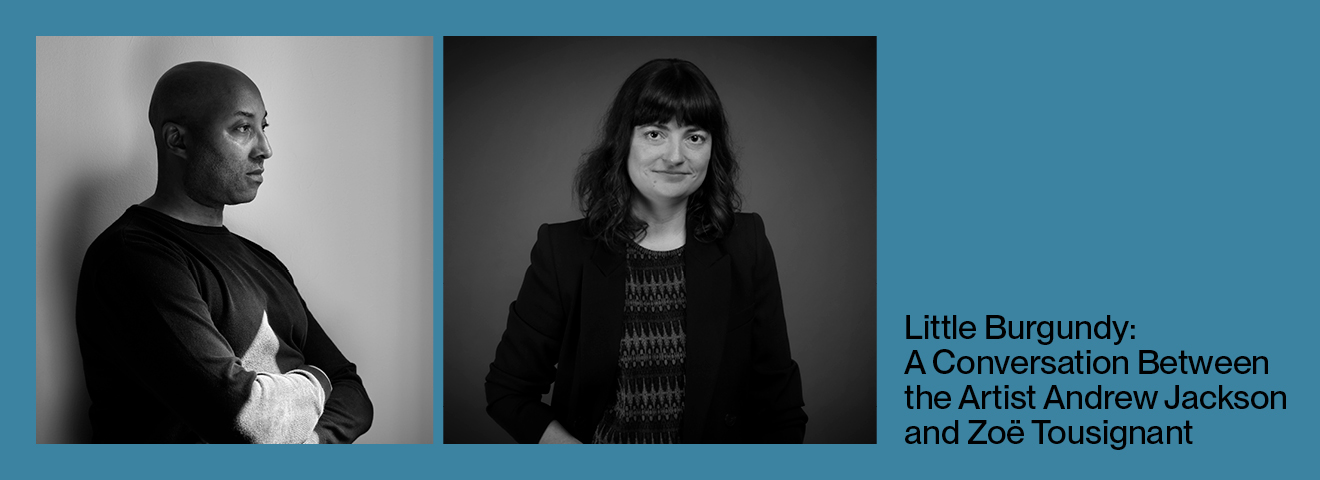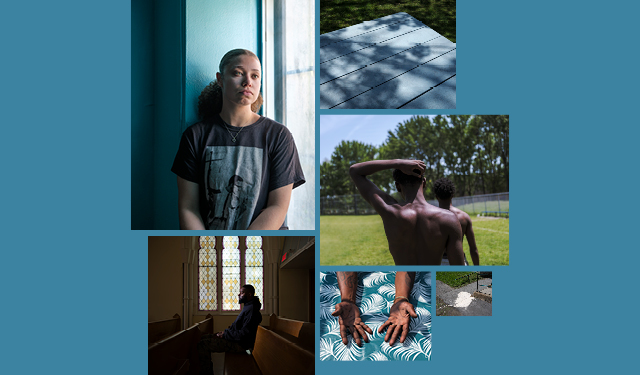Talk
May 28 | 6 p.m.

Conversation between the artist Andrew Jackson and Zoë Tousignant
Free Activity | Space is limited, Reservation required
This discussion, presented as part of the Little Burgundy – Evolving Montreal by Andrew Jackson exhibition, seeks to address the themes underlying the photographic documentation of the Little Burgundy neighbourhood, birthplace of the English-speaking Black community of Montreal.
While revealing the rich and unique path Andrew Jackson has taken – as well as his previous projects Across the Sea Is a Shore, which explores the intergenerational legacy of migrating from the Caribbean to the UK –, the exchange will foster closer ties between the public and this artist, recently established in Montreal.
The conversation between Andrew Jackson and Zoë Tousignant, Curator, Photography at the McCord Stewart Museum, will also cover the relationship between the urban, social and cultural transformations of the neighbourhood, and its persisting role as a conceptual basis of the identity of Black communities.
The themes of family, transnational migration, displacement, trauma, and collective memory explored in Jackson’s photographic work will be put in conversation with the conceptualizations of Black space and the racialization of the urban space.
Information
- Free activity, in English, presented on Wednesday, May 28, 2025, from 6 p.m. to 7 p.m.
Limited seating, reservation required. - Duration: 60 minutes
- Location: J. Armand Bombardier Theatre, McCord Stewart Museum
Interested in the event, but it is sold out? You can show up 15 minutes in advance, and register on the waiting list. Some seats might become available before the beginning of the event.
Biographies
Andrew Jackson
Andrew Jackson is a British-Canadian artist who lives in Montreal. He is an associate lecturer at the London College of Communication, teaching in the MA Photojournalism and Documentary Photography program and has previously served on the advisory board of the Photography Ethics Centre. His practice is developed at the intersection of photography and text and, most recently, focuses on notions of family, transnational migration, displacement, trauma, and collective memory.
Zoë Tousignant
Zoë Tousignant is a photography historian specializing in photography produced in Quebec and Canada. Born and raised in Montreal, she has been actively involved in the city’s art and photography communities for over two decades. She has previously held the positions of Associate Curator, Photography at the McCord Museum and Curator at Artexte. She also worked for several years as an independent curator. Her many curatorial projects have included close collaborations with photographers such as Serge Clément, Carlos Ferrand, Marisa Portolese and Gabor Szilasi.
Zoë Tousignant holds a PhD in Art History from Concordia University and an MA in Museum Studies from the University of Leeds, UK. Her doctoral research, which was funded by the Social Sciences and Humanities Research Council of Canada and Bibliothèque et Archives nationales du Québec, focussed on the use of photography in popular illustrated magazines published in Montreal and Toronto during the Interwar Period.
Her research has focussed on examining print culture as a vital form of dissemination for photography; retracing the networks of people and institutions that constitute the field of visual culture; and elucidating the affective bonds created by photographs and photographic practice. She is a member of the FQRSC-funded research group Formes actuelles de l’expérience photographique: épistémologies, pratiques, histoires, based at Concordia University, the Université du Québec à Montréal, the Université de Montréal and Université Laval.
She believes that the Museum’s photography collection offers a fantastic opportunity to engage with the medium in all its facets—as art, propaganda, memorial device, social documentation, scientific data, and more. For her, the collection itself is proof of how the history of photography should be written.



